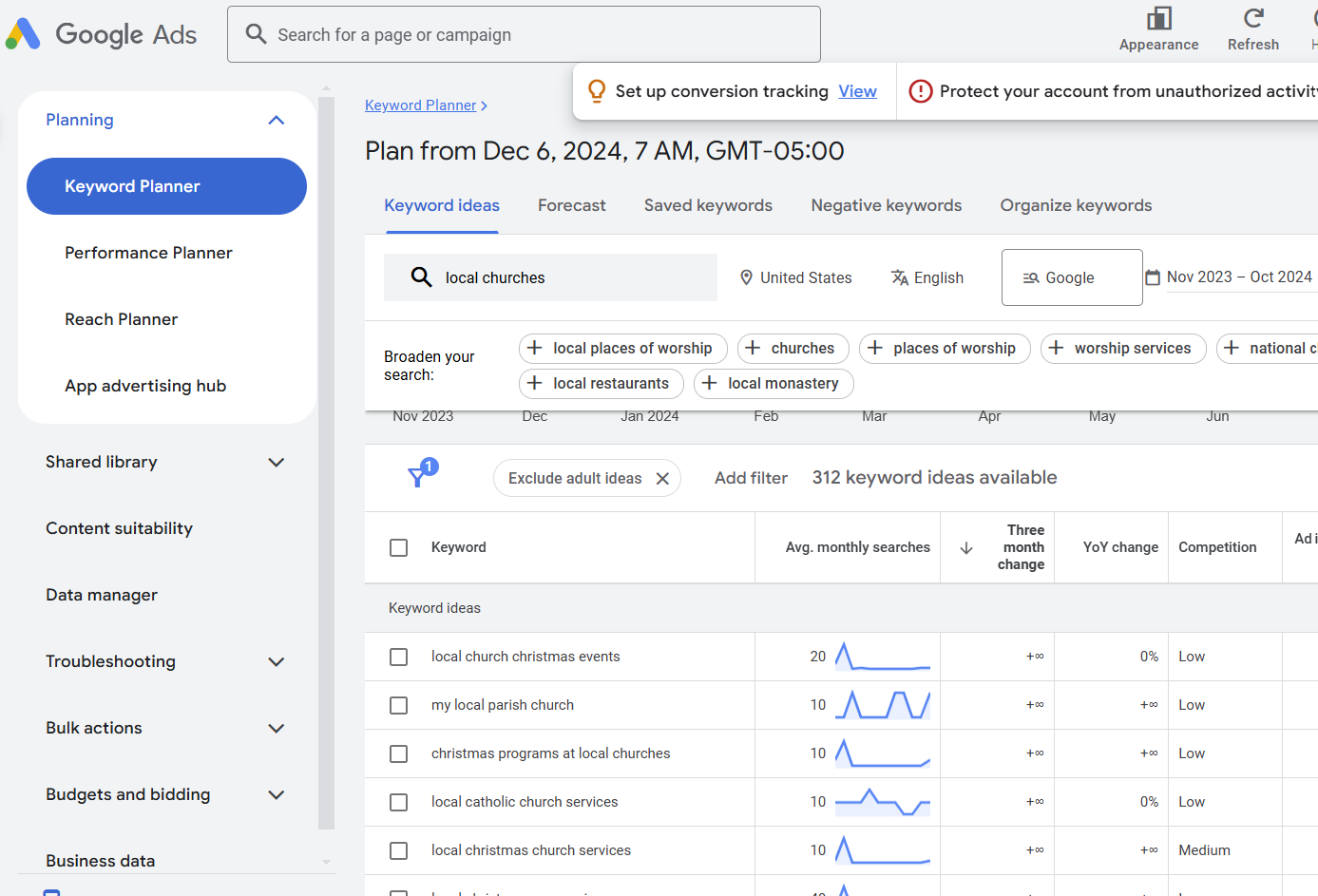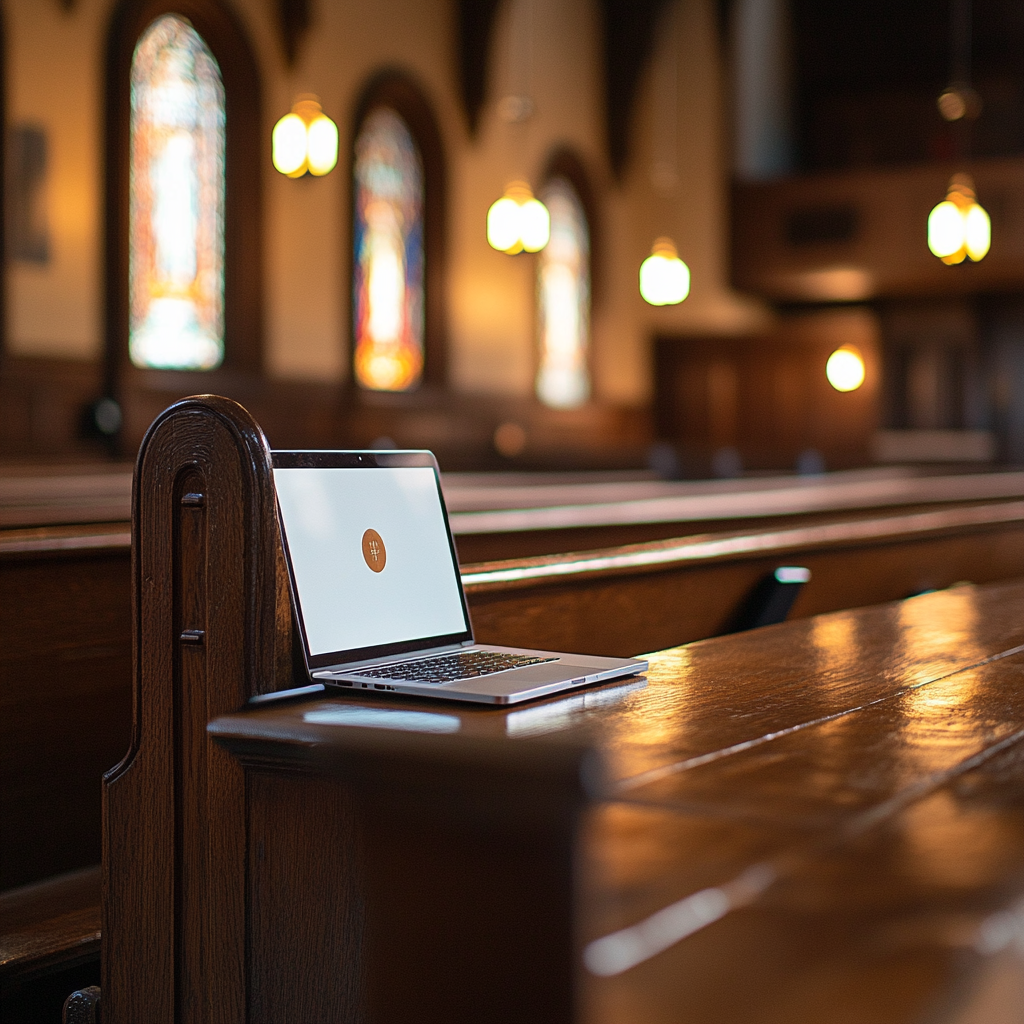To boost your church’s local visibility, focus on local SEO strategies. Start by claiming and optimizing your Google Business Profile for location accuracy. Verify your church’s NAP (Name, Address, Phone Number) information is consistent across all platforms. Conduct keyword research to incorporate local and relevant terms into your content. Regularly update your website with geo-specific content and optimize on-page elements like titles, headings, and images. Encourage your congregation to leave positive online reviews to build community trust. Engage in local community events and explore partnerships for credible backlinks. Follow these steps and unleash the potential for increased community engagement.
Importance of Local SEO
Anyone looking to enhance their church’s online presence should understand the importance of local SEO. By optimizing for local search, you can greatly increase your church’s visibility in search engine results, making it easier for potential visitors to discover your services and events. This targeted approach benefits community outreach by aligning your digital presence with the physical location of your church, guaranteeing you’re reaching the right audience. Mobile optimization is essential here, as many people use smartphones to search for local information.

Visitor engagement is boosted when your church appears in relevant online directories and local search queries. Accurate, up-to-date information about your church’s location, service times, and community events helps build trust and credibility. This consistency across directories and social media platforms enhances your church branding and fosters a reliable image. Regularly updating content on your website signals relevance to search engines, helping to improve your search rankings over time.
Review management is also vital in this process. Positive reviews improve search rankings and increase community trust, making your church a more appealing choice for newcomers. Effective audience targeting through local SEO strategies guarantees that your church remains a cornerstone of the community, attracting more attendees and strengthening community ties.
Crafting a Local SEO Strategy
To effectively craft a local SEO strategy for your church, prioritize three key areas: local listing management, content creation, and community engagement. Start by claiming and optimizing your Google Business Profile. Make sure every detail, from categories to contact info, is accurate. Consistency is essential, so keep your church’s name, address, and phone number (NAP) identical across all platforms. Regularly update your listings with fresh photos and event details to keep them relevant. Encourage your congregation to leave positive reviews, as these boost visibility.

Next, focus on content creation. Conduct thorough local keyword research to identify relevant terms that resonate with your community. Incorporate these keywords into your website, ensuring your titles and meta descriptions are geo-specific. Develop content highlighting your church’s role in local issues or community events. Optimize your events section using structured data markup to enhance visibility in search results. A strong local SEO foundation is crucial for churches to connect with their communities and to improve visibility in local searches.
Optimizing On-Page Elements
Although optimizing on-page elements might seem intricate, it’s essential for boosting your church’s local search visibility. By strategically using relevant keywords like “churches near me” and “Christian churches in [city],” you’ll enhance your site’s local appeal. Focus on keyword density by placing these terms naturally in titles, headings, and content. However, avoid keyword stuffing, ensuring content relevance is maintained for both search engines and visitors.
Crafting high-quality, geo-specific content is another powerful strategy. Regularly update your site with engaging posts, such as sermon summaries or community events in your city, to keep the content fresh and relevant. Structure your website logically, with clear page hierarchies, ensuring visitors easily find what they want. Meta tags and descriptions are your site’s first impression in search results. Create concise title tags and meta descriptions incorporating primary keywords, but keep them compelling to encourage clicks. Each page should have unique tags and descriptions tailored to its specific content. Page titles and meta descriptions are essential for on-page SEO, aiding users and search engines.
Don’t overlook image optimization—use alt text with local keywords and compress files to improve page load speed. Prioritize responsive design for a seamless device user experience, enhancing accessibility and search rankings.
Enhancing Technical SEO
To boost your church’s local SEO, optimize website speed and implement secure protocols. Fast loading times are critical, so compress images, minify code, and use CDNs to enhance user experience and search engine rankings. Secure your site with HTTPS to build trust and improve your visibility in local search results. Enhancing your SEO efforts can increase engagement with potential visitors, ultimately boosting church attendance.
Optimize Website Speed
Imagine your church’s website as a welcoming gateway for local parishioners and seekers from afar. Optimizing website speed is essential to creating a seamless experience. Start by focusing on image optimization. Large images can slow down your site, so resize them to fit their display dimensions before uploading. Compress these images using tools that maintain quality, and consider using efficient formats like WebP to reduce file sizes further.
Next, implement caching strategies to enhance your site’s performance. Visitors can quickly load frequently accessed parts of your site by enabling browser caching without repeatedly downloading the same content. Additionally, site caching stores elements like databases and code, speeding up overall navigation. Improving website load time is crucial because Google prioritizes load time as a ranking factor, directly impacting your site’s visibility.
Consider using a Content Delivery Network (CDN) for a broader reach. CDNs store cached versions of your website in multiple locations, guaranteeing content is delivered swiftly from the server closest to each user. This dramatically cuts down load times, especially for global audiences.
Lastly, refine your site by minifying HTML, CSS, and JavaScript files. Removing unnecessary code boosts efficiency without sacrificing functionality. These strategies will guarantee your church’s online presence is as inviting as your physical doors.
Implement Secure Protocols
After enhancing your church website’s speed, it’s time to focus on implementing secure protocols to boost technical SEO. Establishing HTTPS benefits your site by encrypting data between visitors and the website, guaranteeing their information remains private and secure. This enhances data security and builds trust, as browsers mark HTTPS sites as secure. Additionally, HTTPS is a ranking factor which can improve your church’s visibility in search engine results. As Google employs mobile-first indexing, ensuring your website is secure with HTTPS can positively impact mobile and desktop search rankings. Installing an SSL certificate is essential for achieving these HTTPS benefits. It encrypts any data being transferred, protecting sensitive information like login credentials. Without SSL installation, visitors might receive warnings about potential security risks, damaging your website’s credibility. To maintain trust and enhance your site’s search engine rankings, an SSL certificate is vital.
When implementing HTTPS, consider these best practices:
- Obtain an SSL certificate from a trusted Certificate Authority.
- Update all internal links to use HTTPS and confirm external resources do, too.
- Test the website thoroughly for HTTPS functionality after installation.
Building Links and Authority
To boost your church’s local SEO and build authority, partner with local organizations to gain valuable backlinks and enhance community presence. Many church websites are open to reciprocal linking, creating opportunities to establish a network of church links that enhance visibility. Leverage sermon content by transforming it into blog posts or podcasts, creating shareable material that attracts quality links. Regularly update your site with relevant content to keep it fresh and engaging, signaling search engines to prioritize your church in local searches.
Partner With Local Organizations
Partnering with local organizations can significantly boost your church’s local SEO by enhancing its authority and visibility in search results. By engaging in community outreach and forming strategic partnerships, you can tap into a network that amplifies your church’s presence. Collaborating with local non-profits, community centers, or religious organizations for events, workshops, or outreach programs not only strengthens community ties but also provides numerous partnership benefits with regard to SEO. Local SEO enhances visibility in search results for nearby individuals, making it a crucial component of your church’s digital strategy.
To maximize these partnerships, consider the following strategies:
- Co-host Webinars: Team up with local organizations to present online seminars, increasing your reach and credibility.
- Local Initiatives: Support and engage in local initiatives, enhancing your church’s reputation and trustworthiness in the community.
- Joint Press Releases: Announce collaborations through joint press releases, boosting visibility and authority in local search results.
Participating in local activities can help your church gain high-quality backlinks, contributing to a more substantial online presence. Listing your church in local directories and featuring it in community news articles are effective ways to improve visibility. These efforts bolster your church’s SEO and highlight it as a crucial part of the community, ensuring your message reaches the right audience.
Leverage Sermon Content
Leveraging sermon content can significantly enhance your church’s online authority and link-building strategy. Start by optimizing your YouTube sermons with clear titles incorporating targeted keywords. This guarantees your content is easily discoverable. Write detailed descriptions, including scripture references and links to your church website, facilitating effective content distribution. Use relevant tags to boost your video’s visibility and engage with viewers by responding to comments, increasing sermon engagement, and improving video rankings. Churches should prioritize YouTube as it is essential for outreach, making it a critical strategy for increasing sermon visibility to a wider audience.
Create a dedicated section for sermons on your church website to enhance easy navigation. Use multimedia elements like videos and images to enrich user experience and SEO. Incorporate interactive elements such as discussion questions to encourage community interaction. Make certain sermons are shareable on social media, expanding their reach and engagement. Consistently updating content signals activity to search engines, boosting your site’s authority.
Focus on scripture-based content and communicate your messages clearly to build authority. Creating a consistent theme across sermon series can strengthen your church’s message. By optimizing each sermon page with keyword-rich titles and descriptions, you’ll improve search engine indexing and visibility, enhancing both sermon engagement and content distribution.
Update With Relevant Content
After optimizing sermon content, updating your website with relevant content is important to build links and authority effectively. Start by rejuvenating your content regularly. This keeps your site fresh and encourages audience engagement, vital for boosting search engine rankings. Create high-quality blog posts that reflect your church’s unique content themes and share stories about community involvement. These updates enhance your site’s dynamic nature and strengthen its authority by attracting backlinks. Link building is crucial as it establishes beneficial website relationships, enhancing visibility and authority.
To further solidify your church’s online presence, consider these strategies:
- Collaborate with Local Organizations: Partner with faith-based groups to gain valuable backlinks and increase your geo-specific content reach.
- Participate in Community Events: Engage actively in local happenings to get featured on news sites, enhancing your authority.
- Optimize Directory Listings: Verify your church is listed accurately in online directories to improve visibility and link-building opportunities.
Integrating SEO in Design
When integrating SEO into your church’s website design, creating a structure that enhances user experience and search engine visibility is vital. Start by guaranteeing your website offers logical and user-friendly navigation. This means building a clear hierarchy of pages that’s easy for visitors and search engines to understand. Use descriptive, keyword-rich URLs to improve visual appeal and clarity further. Incorporate schema markup to structure your data, which will help search engines better understand your content and enhance your site’s visibility.

Next, conduct thorough keyword research to find local search keywords and long-tail phrases that resonate with your community. Naturally, weave these keywords into your content, optimizing meta tags and descriptions to boost your website’s search engine ranking. Don’t forget to address local issues and community involvement, as geo-specific content can greatly enhance your church’s online presence. Optimizing your Google My Business profile is essential for local SEO, ensuring accurate information and boosting community connection.
Mobile optimization is essential; confirm your site is responsive and provides a seamless user experience across all devices. Fast loading speeds and a secure HTTPS connection are non-negotiable for maintaining control over your site’s performance. By integrating these SEO strategies into your design, your church can effectively reach and engage its community online.
Conclusion
You’ve got a solid grip on local SEO for churches now, and it’s clear: optimizing for your community makes your church more visible and accessible. You’re boosting search rankings and fostering real connections with your congregation by focusing on targeted keywords, geo-specific content, and smart optimization strategies. Remember, it’s not just about algorithms; it’s about reaching out and making your church a welcoming beacon in the digital landscape. Keep refining your strategy, and watch your community grow!











